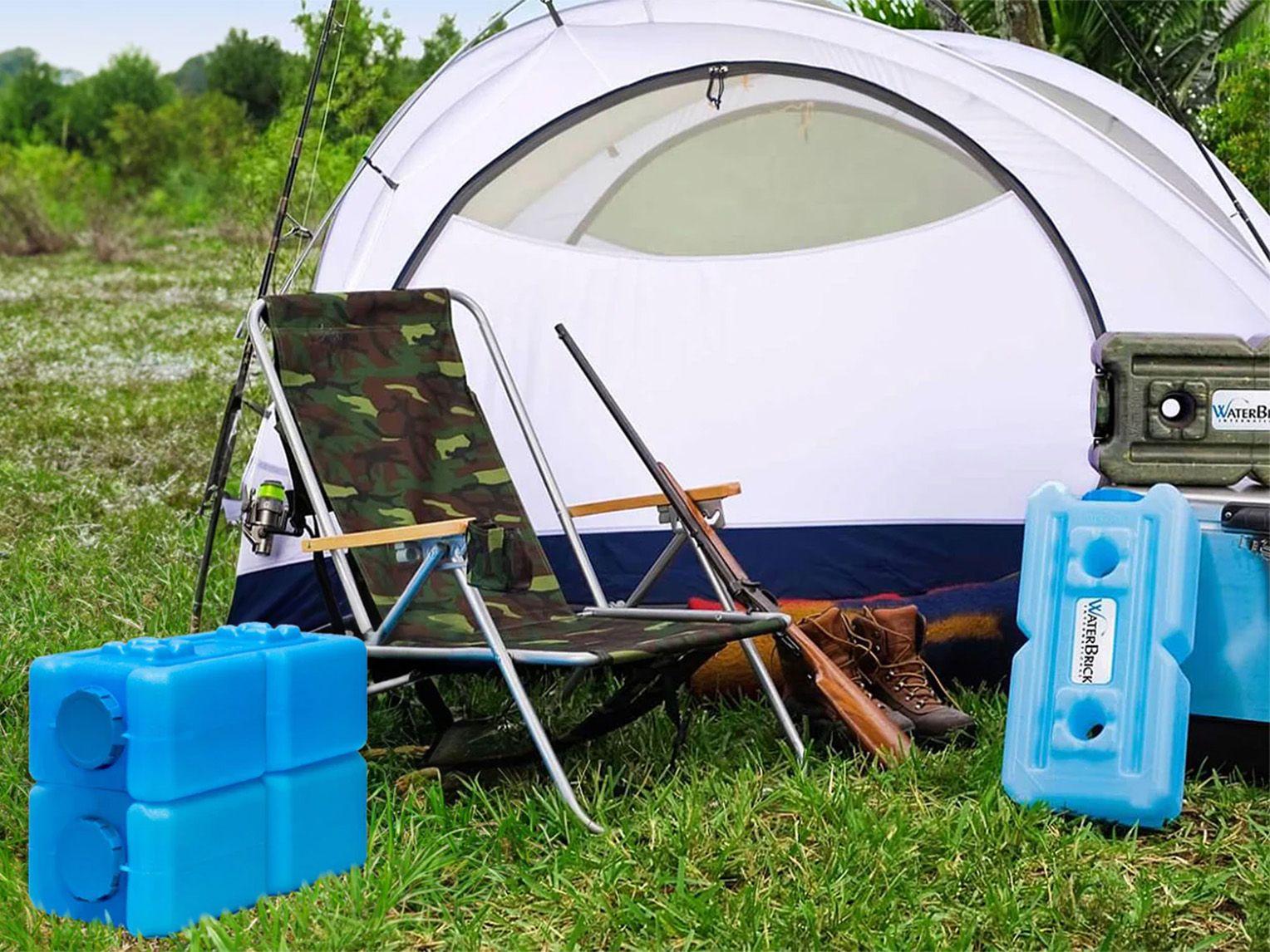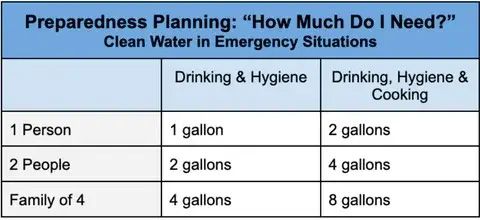Preparing for Natural Disasters – Water Storage Tips

There are many important things to do to prepare for a natural disaster. One of the most crucial is gaining and properly storing water.
If a disaster contaminates the water supply – or shuts it off altogether – we’ll need plenty of water. For drinking, cooking, bathing, washing clothes and cleaning surfaces.
Recent hurricanes such as Debby, heatwaves, wildfires, flooding, and other storms including tornadoes are reminders that acquiring water is a significant component of preparedness. Figure on 1 gallon per day per person in your household.
Here's an estimate of how much water you'll need in a typical water-supply emergency...

Try to store a 2-week supply if possible. Store more water for pregnant women, people who are sick, pets, or if living in a hot climate.
But just as important – especially for the water we drink – is storing it properly. That’s what we’re going to look at today.
Clean water is essential
What’s so important about water? That’s an easy one. We can survive without food for a while if we have to. But not without water.
Clean water is also essential for basic hygiene needs. This helps prevent the spread of diseases. Especially if we end up in an emergency shelter.
Of course, water is necessary for cooking and nutrition. Even the longest-lasting survival food usually requires water for preparation.
Taking medicines and treating injuries also requires clean water.
11 water-storage suggestions


It’s amazing how many people never take the time to do this.
Others do it but then forget about it. And when a crisis rolls around, they discover their supply has been sitting around too long. Or was left in a place where the water’s quality was compromised. Either by high temperatures or exposure to light.
By following the 11 water storage tips below, you’ll be able to provide your family and yourself with life-giving water when a disaster strikes.
- Store various sizes of water containers. Water is very heavy, and if all you have is large containers, not everyone in your family may be able to comfortably handle them. This is especially important if you and your family are forced to go mobile in a crisis.
- Select food-grade barrels. Blue, polyethylene plastic storage barrels for large quantities of water are popular. They’ll also help differentiate your water from your fuel. And won’t taint your water with toxins.
- Clean the containers. Before filling them with water, dilute one teaspoon of bleach in a gallon of water. Wash the containers thoroughly. Including insides, lips and lids. Never store water in a container that’s been used to store something else.
- Place labels on your containers. Clearly mark the date you filled the container on each label. As well as the source (filtered water, tap water, ground water, etc.).
- Keep it in a proper place. Make sure your water containers do not have access to sunlight. Which can result in bacteria and algae growth. A cool, dark place away from chemicals is best. And only use containers with airtight lids.
- Secure the containers. Think in advance about which areas in your home would most likely be affected by a disaster. Keep containers out of there. Avoid high places. And keep your water locked away if you think looting is possible.
- Don’t let your water freeze. Frozen water could break its containers. Plus, you might not have time to wait until it thaws before you need to drink it.
- Filter your water. If necessary, before you store it. If not, it’s still a good idea to have a water-filtering plan in place in case your water becomes contaminated.
- Replace your supply regularly. Yes, it could last for a long time if stored properly. But replacing it at least once a year is a good idea.
- Keep additional water containers in a separate location. If your home is destroyed in a disaster, your home water supply will likely also be ruined.
- Identify potential emergency water sources inside and outside your home. Including your water heater, and toilet tank. Plus nearby streams, rivers, or lakes.
Learn to filter water
You could eventually run out of your emergency water supply. So, learn how to filter it from a variety of sources.
There are different ways to do this. It’s best to be prepared for several options. You never know which resources may be available once a disaster strikes.
Here comes the sun
If you bug out, the sun will make you thirsty. Ironically, it can also help make your water safe. Here’s a simple process for that.
- Use clear, clean polyethylene terephthalate (PET) bottles of soda pop no bigger than 2-liter size. PET bottles are usually marked with the recycling symbol and a numeral “1”. Remove all wrapping and packaging.
- Fill them with whatever water you can obtain and close the cap tightly.
- Lay them out for maximum sun exposure. A rack tilted at the sun is best. But if not, use a flat surface with good sunshine so bottles don’t roll away.
- Expose the bottles for at least six sunny hours, preferably more. Or two full cloudy days.
- Do not overuse bottles. You will ingest plastic material over time. So keep your bottles fresh.
- Do not treat too much water at once. The depth of the water is key as the UV rays from the sun kill bacteria. Do not use buckets. Keep the water depth that is perpendicular to the sun a maximum of four inches.
Filtering rainwater
Now, it’s easy to say, “Fill a bottle with water.” But where is that water coming from? One source is rainwater. The solution to most problems doesn't fall from the sky. But this one does. Here are three steps to filter rainwater:
- Install a downspout filter on your home’s roof drainage system. You could purchase one or build one yourself at a fraction of that cost. This will divert grime, insects, and bird waste out of your supply.
- Install a rain barrel below the downspout filter. Make sure you have a spigot and smaller water vessels for transferring water inside. You can buy barrels or fashion them yourself.
- Set up a simple gravity filtration system to clean the water.
If you can stockpile plenty of water for your household and learn how to filter water from other sources, you will be in good shape to handle your water needs no matter what happens.
References:
- All testimonials in this advertisement are from real people; sometimes names and photos have been changed to protect their privacy and some were given free products in exchange for their honest feedback. Testimonials represent exceptional results, don't apply to the average purchaser and are not intended to guarantee that anyone will achieve the same results. The organizations, publications and people referenced on this site are not affiliated with 4Patriots. They have not endorsed, sponsored or recommended this product; no affiliation or endorsement is claimed. Terms & conditions apply. Cade Courtley is a former Navy SEAL and Platoon Commander who served 9 years of active duty and has been compensated by 4Patriots for his hard work in helping us test and endorse this product. Cade Courtley is a former Navy SEAL who served 9 years of active duty and has been compensated by 4Patriots for his hard work in helping us test and endorse products.
